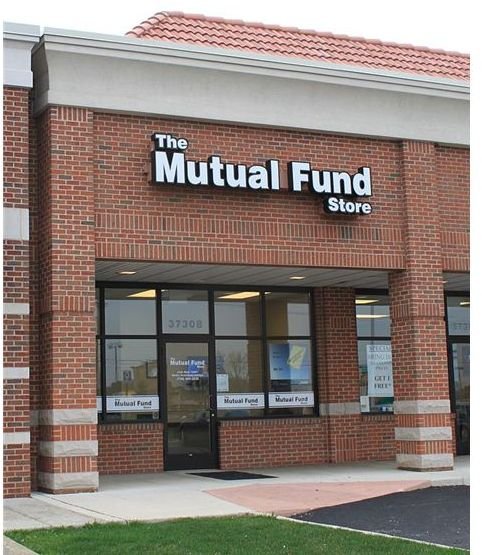What is Mutual Fund Load Cost?
Types of Mutual Funds
A mutual fund is either a load fund or a no-load fund. Having a load means the fund has some sort of built-in fee structure to compensate a selling investment advisor or broker. No-load funds do not have sales charges or commissions. Investors using no-load funds either must do their own research and fund selection or pay an investment advisor additional fees to help with fund investment decisions.
The traditional load mutual fund type is called a front-end load. In the late 1980’s, back-end loaded funds became popular. A mutual fund may be available in both types and differentiate the shares into class A and class B shares. The mutual fund company’s have increased their creativity in mutual fund fee structures and you might also see class C and other alphabet soup share classes. The additional ways to charge fees have made it more difficult to understand mutual fund loads.
Front Load Fund Shares
Front end load mutual funds include a sales charge in the price of the shares when investments are made. The amount of the sales charge is a percentage of the current share price and amount of money invested. Some terminology will make understanding fund loads easier.
- Net Asset Value (NAV) - is the share price of a mutual fund. The price is calculated by dividing the value of the fund’s portfolio by the number of shares owned by investors. No-load investors buy and sell at the NAV.
- Public Offering Price (POP) - is the share price for the purchase of load mutual funds. A sales charge percentage is added to the NAV and the result is the POP.
The sales charge percentage for class A shares is published in the prospectus of each mutual fund. Typical sales loads start at four to six percent for stock funds and are often at a lower percentages for bond funds. The mutual fund company uses load amount plus the NAV on the day of the investment to calculate the POP.
As an example, a mutual fund has a current NAV of $10.00 per share and a maximum sales charge of five percent. The POP is calculated by dividing the NAV by one minus the load percentage. In this case, the POP is $10.00 divided by 0.95 equals $10.53. A $10,000 investment with these prices would buy 950 shares of stock. The investment would start out with a value of $9,500. Note the investment result is the investment amount less the sales load percentage.
Class A shares have breakpoints where the load percentage declines as the amount invested increases. Mutual funds have lower load percentages starting at $50,000 or $100,000 and decreasing as the investment amount increases. With a $1 million investment, most load mutual funds have no sales charge. So what is mutual fund load cost and how does it impact an investor?
Back End Load Funds
Back-end loaded funds, often referred to as class B shares, allow an investor to buy shares at the NAV price but charge a redemption fee if the shares are sold in the first five to seven years. The official term for the redemption fees is contingent deferred sales charge (CDSC). As an example, the CDSC schedule for the B shares of stock funds from Federated investors are fees of 5.5 percent, 4.75 percent, 4.0 percent, 3.0 percent, 2.0 percent and 1.0 percent for share redemptions in years one through six respectively after the shares are purchased.
Class B shares are not a free lunch for investors when compared to the front loaded class A shares. To recover the upfront compensation the mutual fund company pays to selling brokers, the B shares of a fund will have a higher expense ratio. The expenses for B shares typically are 0.80 percent higher than the A shares. Multiply the extra expenses times the eight years it takes until B shares convert to A shares and the B shares end up costing over six percent more in expenses compared to the five to six percent front end sales charge of A shares.
In recent years, several of the major mutual fund families have stopped offering class B shares including Fidelity, Franklin Templeton, American Funds and Dreyfus.
Mutual Fund Sales Charge Considerations
An investor buying a mutual fund from a broker or investment representative will most likely invest in a load mutual fund. In most circumstances, biting the bullet and paying the upfront commission of class A shares will result in better long term performance of the fund account.
Consider the breakpoints if you have $50,000 or more to invest. The breakpoints can be met by buying different funds from the same fund family, total investment amounts in different family accounts and with investments over a period of time. A letter of intent to the mutual fund company expressing your plan to meet a breakpoint level within 13 months will allow you to buy shares at a lower load from the first dollar and space the purchases over the 13 month period.
Mutual fund sales charges are the cost you pay to have an investment representitive assist you in selecting funds and monitoring your accounts and investment goals. It is important to have the rep explain how the loads work. Also, do not be surprised when the first statement comes in from your mutual fund account and the value is three to five percent less than the amount you invested. You now know what a mutual fund load is and how to account for the missing value.
Resources
SEC.gov: Mutual Fund Fees and Expenses
Federated Investors: Prospectus for Federated Intercontinental Fund
Photo: The_Mutual_Fund_Store_office_Livonia_Michigan By Dwight Burdette (Own work) [CC-BY-3.0 (www.creativecommons.org/licenses/by/3.0)], via Wikimedia Commons
